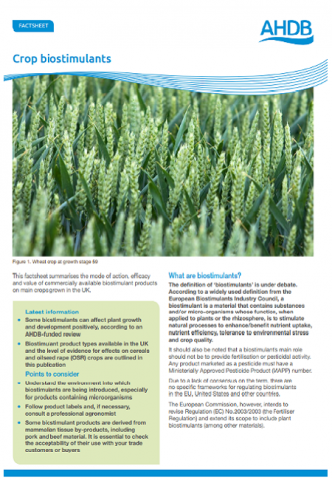Across nine sites over two seasons yield effects of amino acid applications were not significant.
Amino acids have been widely reported in the farming press and in a few scientific papers to be biostimulants, but with little or no independent evidence from UK field conditions. This Amino Acid FIG was established to put that right, making eight tests in 2018 and five more in 2019.
In 2018 application timings were either autumn or autumn & spring (targeting tillering and stem extension), 7/8 sites were taken to completion. In 2019 the timings were T1 (early stem extension) and/or T2 (final leaf fully emerged) or in response to drought stress and 3/5 sites were taken to completion.
In 2018, spring application resulted in a significant positive effect at one out of seven sites (+0.5 t/ha). Whereas, autumn and spring application resulted in a significant negative effect at one site out of four (-0.71 t/ha). However, these two significant results were from the same field with no treatment replication, and may have been compromised by underlying soil variation within the field. In 2019 there were no significant effects of amino acids at any of the three sites. When the spring and T1 timing trials were grouped in a cross site analysis (9 sites in total) there was no significant effect of amino acid application (Mean weighted yield effect = 0.11 t/ha, SE = 0.086).
This suggests that under these conditions (relatively high yielding wheat crops), the application of amino acids was not beneficial for yield and did not provide an economic benefit. If considering use of biostimulants, growers should consider joint on-farm testing of products if no independent evidence for claimed product effects is available.
Click here to read the full report.

